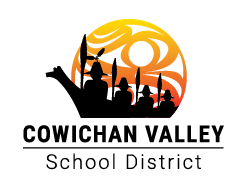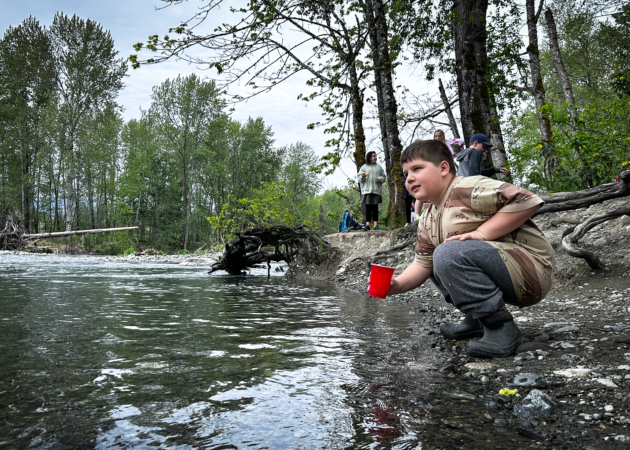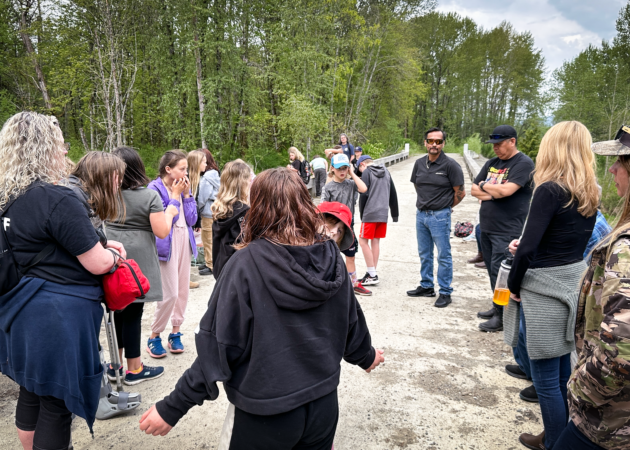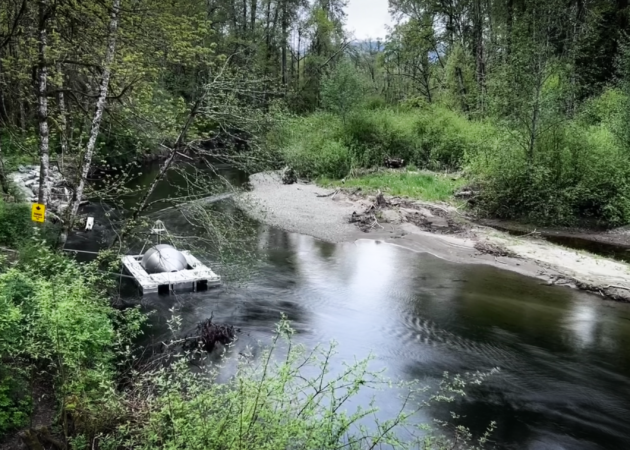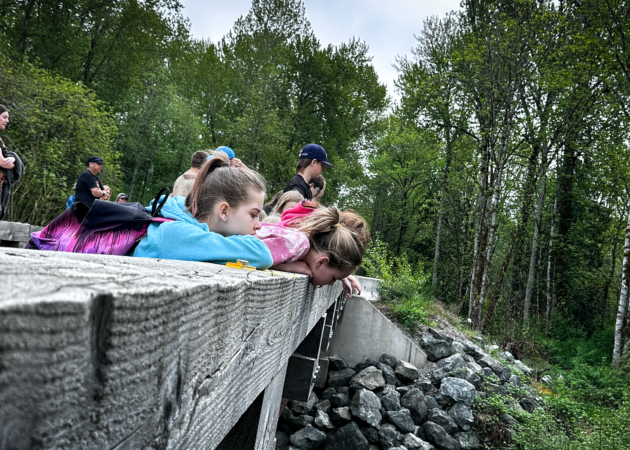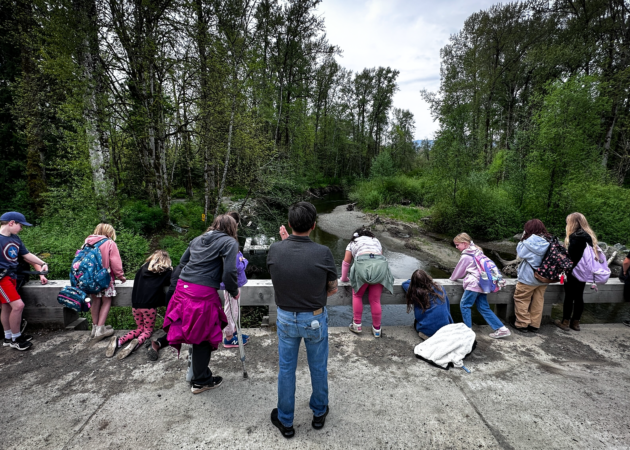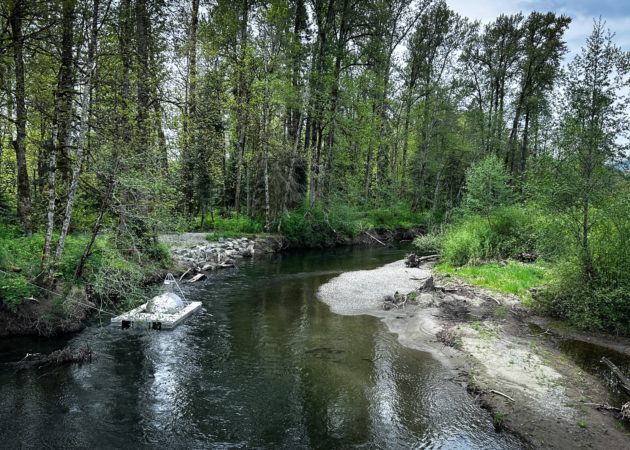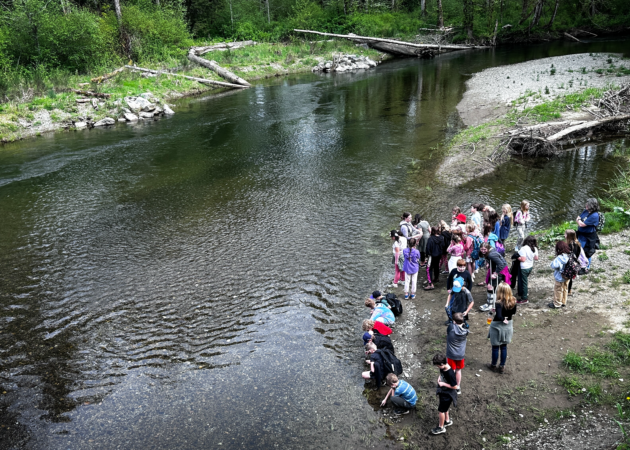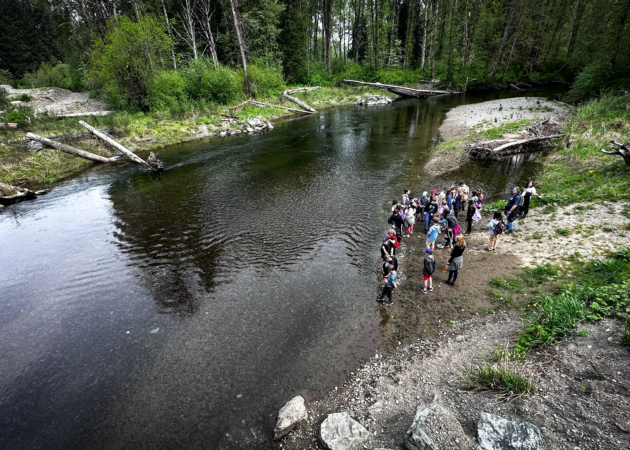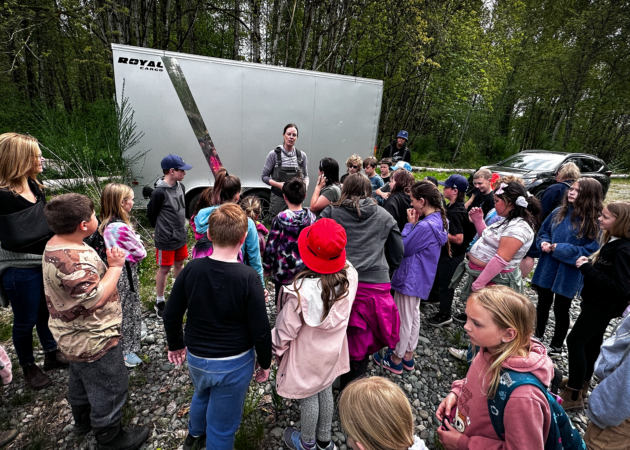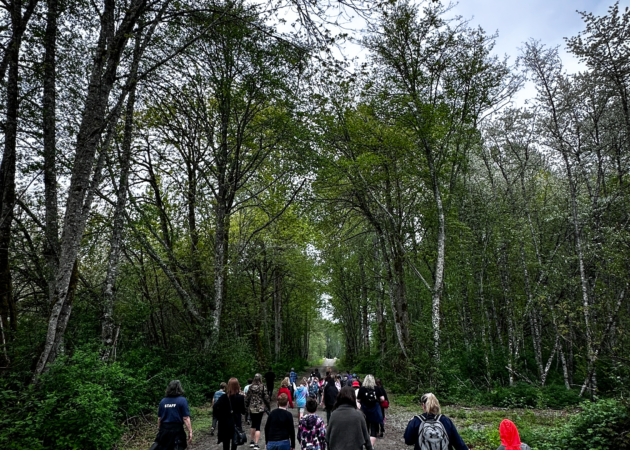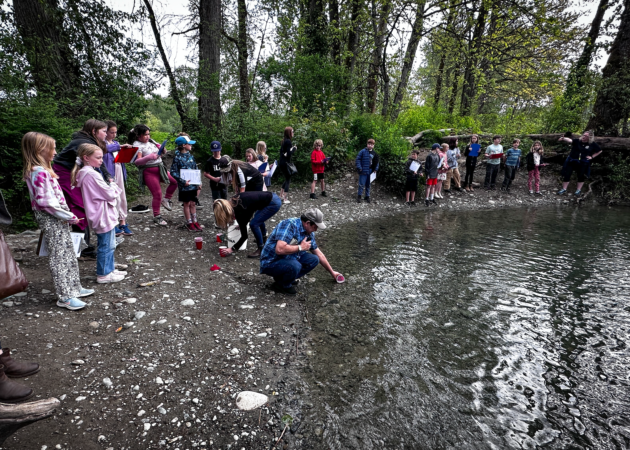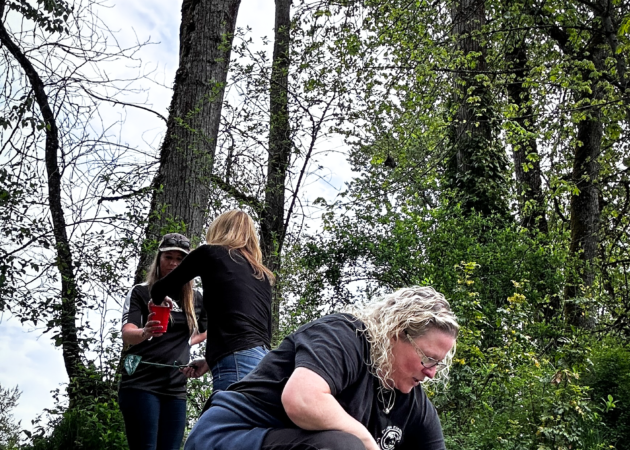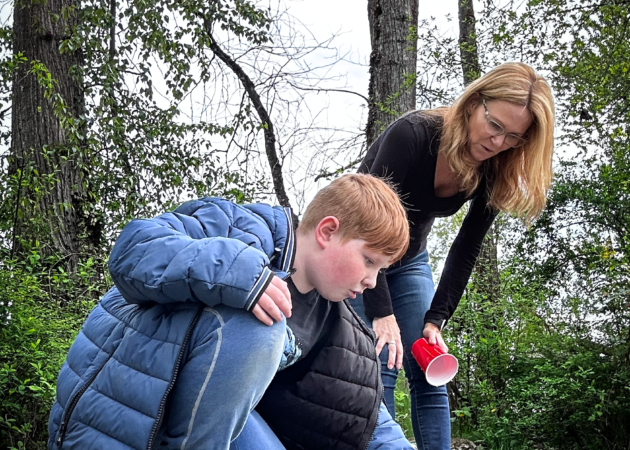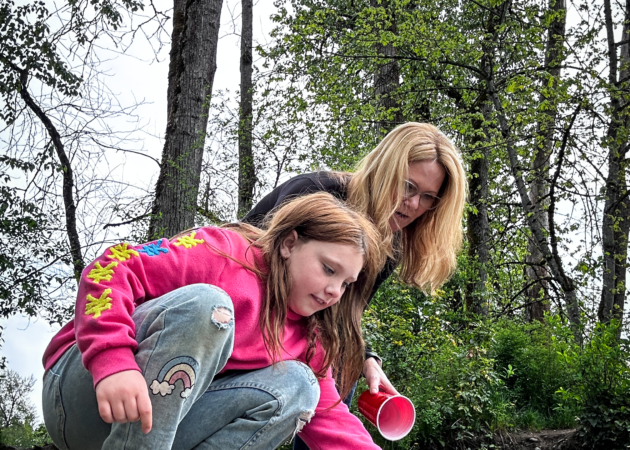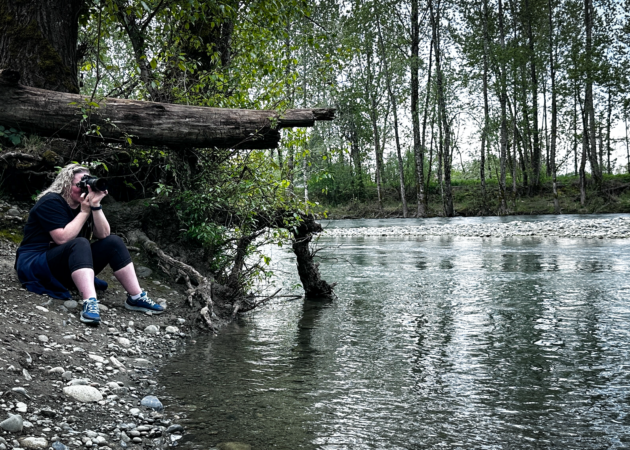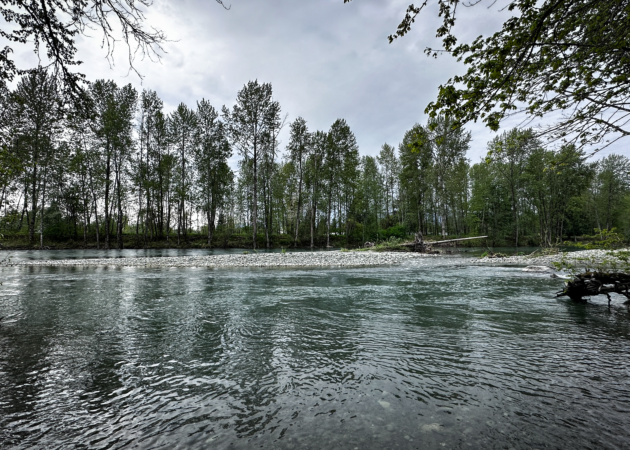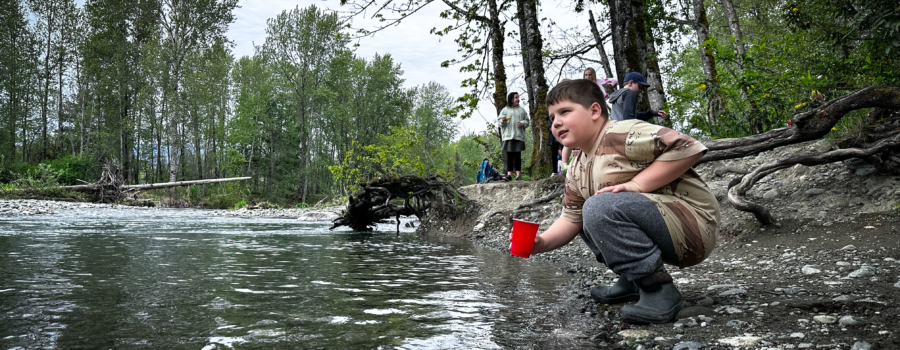
For as long as I’ve been with the Cowichan Valley School District, and we haven’t been dealing with remote learning or modified classes due to a worldwide pandemic, I’ve been invited to join Crofton Elementary teachers Becky Greenhow and Angella Campbell and their classes on their annual Salmon fry release.
This year marked an important change to Crofton’s Salmonids in the Classroom project (a project funded and developed by Fisheries and Oceans Canada) in that this year’s release was done in the Quw’utsun Sta’lo (Cowichan River) watershed, not at Stocking Creek as was typical.
When I arrived on that overcast spring day to meet the classes, the hum of excitement was overpowering the sound of the rushing water coming from the river. Students were eagerly awaiting their turn for Ms. Campbell to catch their salmon fry from the bucket and release ‘their’ fish into the Cowichan River. One by one Ms. Campbell helped the students said goodbye to the individual fry while Ms. Greenhow captured these memories for the students on camera.
Once all the fry had been released to their new home, the students cleaned the area where they had gathered, partnered, and walked to their bus for the next part of their two-part salmon adventure.
A large part of the learning from the Salmonoids in the Classroom project is exploring the Salmon lifecycle, but with that, the health and conservation of the species are key topics as well. Crofton students were treated to a visit to the Cowichan Tribes land on the Hwulqu’selu (Koksilah) river to learn about the ‘screw trap’ and salmon in the Hwulqu’selu (Koksilah) watershed.
Local Cowichan knowledge keeper Wayne Paige met the students at the river and helped them understand why the salmon are so important to both the Cowichan people and the Koksilah watershed. Wayne described the purpose of the screw trap and how it helps in the management of salmon in the river.
As the sun broke, and Wayne concluded his talk, the students enjoyed a short hike through the forest on Cowichan land. Finally, after enjoying their lunches on the warm day, the students walked back to their bus having done their part in replenishing salmon stocks in the Cowichan River and developing a deeper understanding of how their important work supports our environment, our rivers, and our neighbours.
